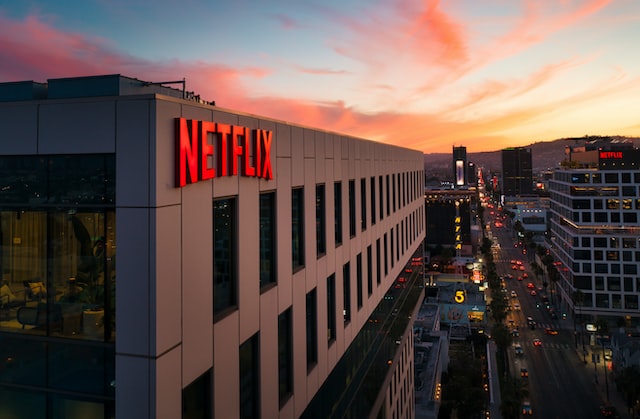Before we get into the specifics of Netflix, let’s understand competitor analysis. Competitor analysis is a strategic research method companies use to identify, evaluate, and understand their current and potential competitors within the market. It’s an essential business strategy component and instrumental in understanding the industry landscape.
The process usually involves the following steps:
- Identifying Key Competitors: The first step is to identify who your competitors are. These may be direct competitors (those who offer the same or similar products or services as you) or indirect competitors (those who offer different products or services but compete for the same consumer dollar).
- Analyzing Competitors’ Strategies and Objectives: Once competitors are identified, the next step is to understand their business strategies and objectives. This may involve analyzing their marketing materials, financial performance, customer reviews, or any public information available about the company.
- Assessing Competitors’ Strengths and Weaknesses: This step involves evaluating the identified competitors’ strengths and weaknesses. Strengths include unique products or services, strong brand recognition, and superior customer service. Weaknesses include poor product quality, weak customer service, or high prices.
- Understanding Competitors’ Products/Services: Understanding what your competitors offer and how your products or services compare is important. This could involve looking at features, quality, pricing, customer service, and marketing strategies.
- Observing Competitors’ Reaction Patterns: Some companies react more aggressively than others when faced with competition. Understanding these patterns allows you to predict how these companies might respond to your business strategies.
- Drawing Conclusions and Formulating Strategy: The final step is to take all the information gathered from the analysis, draw meaningful conclusions, and use those to formulate or adjust your business strategies.
The main goal of a competitor analysis is to understand the competitive landscape, spot opportunities, and threats, and position your company most advantageously. It helps to inform strategic decisions, from product development to marketing and sales efforts. Now let’s do a competitor analysis of Netflix.
Here is the competitor analysis of Netflix
Netflix has 5 significant competitors globally: Amazon Prime Video, Disney+, Hulu, Apple TV+, and HBO Max. Let’s analyze how Netflix competes with each of its competitors.
Amazon Prime Video
- Content: Both platforms invest heavily in original content, a significant driver of subscriptions. Netflix has been successful with several originals, including “Stranger Things,” “The Crown,” “Money Heist,” and “The Witcher.” Amazon has also found success with originals like “The Marvelous Mrs. Maisel,” “Fleabag,” and “The Boys.” Netflix often releases all episodes of a season at once, encouraging binge-watching. On the other hand, Amazon often releases episodes of its original content weekly, more akin to traditional TV schedules.
- Library: Netflix traditionally had a more extensive library than Amazon, but Amazon has been catching up. It’s important to note that the size of the library can vary significantly by country due to licensing agreements.
- Pricing: Netflix offers a range of pricing options depending on the streaming quality and the number of screens you can watch simultaneously. Amazon Prime Video is included with an Amazon Prime subscription, which also offers benefits like free shipping on Amazon orders. In addition, Amazon Prime Video allows the rental or purchase of additional content, which Netflix does not. The Amazon Prime Membership Fee.
- User Experience: Both platforms offer intuitive user interfaces, high-quality streaming, and personalized recommendations. However, they differ in certain aspects, such as offline viewing – a feature that Netflix introduced earlier.
- International Availability: Both platforms are widely available around the globe. Netflix, however, traditionally had a broader international reach than Amazon Prime Video.
- Bundling and Additional Services: While Netflix is purely a video streaming service, Amazon Prime Video comes bundled with other Amazon services like Amazon Music and the broader Prime membership perks, such as expedited shipping on Amazon orders.
Disney+
- Content: Netflix’s approach has offered a broad range of content to appeal to a wide audience. This includes films and series from various genres and numerous countries, making it an eclectic service for different tastes. In contrast, Disney+ primarily features content from owned and operated studios like Disney, Pixar, Marvel, Star Wars, and National Geographic.
- Original Programming: Netflix has invested heavily in its original programming, with shows like “Stranger Things,” “The Crown,” and “The Witcher” gaining worldwide popularity. Disney+ also offers original content, but it’s mainly tied to its existing franchises like “The Mandalorian” from Star Wars, “WandaVision” from Marvel, or “The Mighty Ducks: Game Changers.”
- Pricing: As of 2021, Netflix offered multiple pricing tiers depending on the streaming quality and number of concurrent screens. Disney+, on the other hand, Disney+ offered a single, lower price point but could also be bundled with Hulu and ESPN+ for a higher price. Check out the latest Disney+ pricing.
- International Presence: Netflix has been globally present longer than Disney+ and has made significant investments in international content, creating original programming in many different languages to cater to these markets. Disney+ began its global expansion later but is catching up quickly.
- Target Audience: Disney+ is mainly family-friendly and appeals to younger audiences and families due to its extensive library of Disney, Pixar, and Marvel content. Netflix offers a broader range of content and aims to cater to all demographic groups, from kids and teens to adults.
- User Experience: Both platforms offer high-quality streaming and user-friendly interfaces. They also both allow for offline viewing and provide personalized recommendations.
- Release Strategy: Disney+ has been following a weekly release schedule for new episodes of its original series, similar to traditional TV broadcasts. Netflix typically releases all episodes of its series at once, encouraging binge-watching.
Hulu
- Content: Netflix has a more extensive catalog of films and TV shows and has invested significantly in producing original content. Netflix series like “Stranger Things,” “The Crown,” and “The Witcher” have garnered worldwide acclaim. On the other hand, Hulu has a strong lineup of TV shows, including current shows from major networks like NBC, ABC, and Fox, typically available the day after they air on TV. Hulu also produces some original content such as “The Handmaid’s Tale” and “Little Fires Everywhere.”
- Live TV: Unlike Netflix, Hulu offers a Live TV service that competes with traditional cable. Hulu + Live TV includes access to many real-time popular channels and a cloud-based DVR service.
- Pricing: As of 2021, Netflix offered several pricing tiers based on the number of screens and resolution. Hulu had a lower starting price for its on-demand service, which included ads. Ad-free viewing was available at a higher price point, and Hulu + Live TV was still more expensive. Check out the latest Hulu pricing.
- User Experience: Both platforms have easy-to-use interfaces and offer personalized recommendations. However, Hulu’s interface also needs to accommodate live TV viewing, making it slightly more complex.
- Availability: As of 2021, Hulu was only available in the U.S., while Netflix was available in over 190 countries. This international presence gives Netflix a larger potential audience.
- Bundling: Hulu is owned by Disney and is available as part of a bundle with Disney+ and ESPN+ for a discounted price, providing more content diversity.
- Release Schedule: Netflix typically releases all episodes of a season at once, while Hulu often releases episodes of its original shows weekly, maintaining a closer alignment with traditional TV schedules.
Apple TV+
- Content: One of the main ways these services compete is through their content. Netflix has a vast library of films and TV shows, and it has earned a reputation for its original content, with high-profile shows like “Stranger Things,” “The Crown,” and “Money Heist.” Apple TV+, on the other hand, has a smaller library that consists entirely of Apple’s original content, such as “Ted Lasso,” “The Morning Show,” and “Servant.”
- Pricing: As of 2021, Netflix had several subscription tiers with different price points based on streaming quality and the number of devices that can be used simultaneously. Apple TV+, in contrast, had a single, lower-cost subscription option. Check out the Apple TV pricing.
- Availability: Netflix has a significant advantage in terms of global availability, with a presence in more than 190 countries. Apple TV+ is also available in many countries, but Netflix’s head start has allowed it to invest in international content, making it more appealing in various markets.
- Device Compatibility: Apple TV+ works seamlessly with Apple devices, which could be an advantage for customers already in the Apple ecosystem. However, Netflix has a broader range of compatibility, working with virtually any device with an internet connection and a screen.
- Bundling and Additional Services: As of 2021, Netflix was solely a streaming service, while Apple offered bundling options with its Apple One subscription, combining Apple TV+, Apple Music, Apple Arcade, and iCloud storage.
- User Experience: Both platforms offer high-quality streaming and user-friendly interfaces. They also provide personalized recommendations based on viewing habits.
HBO Max
- Content: Both platforms invest heavily in their content libraries but with different strategies. Netflix has a diverse content selection with various genres from multiple production houses. It has a strong reputation for its original series like “Stranger Things,” “The Crown,” and “Money Heist.” HBO Max, on the other hand, combines the classic HBO library known for high-quality, critically acclaimed content (such as “Game of Thrones,” “Westworld,” and “The Wire”) with a broader selection of content from other properties owned by WarnerMedia, including Cartoon Network, DC, and more.
- Original Programming: Both platforms are known for their high-quality original programming. With a larger budget and a head start in the streaming market, Netflix has a more extensive portfolio of original content. HBO Max, while having fewer originals, benefits from HBO’s reputation for critically acclaimed shows.
- Pricing: As of 2021, Netflix offered several subscription tiers, with the price varying based on the streaming quality and the number of screens that can be used simultaneously. HBO Max had a single, higher price point, reflecting its premium content. However, in 2021, HBO Max introduced a lower-cost, ad-supported tier.
- User Experience: Both platforms provide high-quality streaming, personalized recommendations, and user-friendly interfaces. They also both allow for multiple user profiles and offer parental controls.
- Device Compatibility: Both services are compatible with various devices, including smart TVs, smartphones, tablets, and computers.
- Availability: As of 2021, Netflix had a more extensive global reach, available in over 190 countries. HBO Max was initially only available in the United States but has started expanding internationally.











